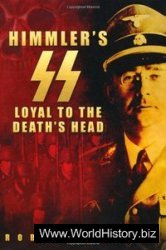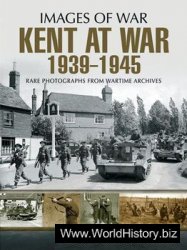Sion, 1946-47, direct US aid decreased.
Meanwhile, the pla, using Japanese materiel handed over by the Soviet Union, was able to expand its guerrilla operations into full-scale offensives. Late in
1948, the PLA secured Manchuria, where 300,000 Nationalist troops surrendered, and shattered the central kmt forces in the Kaifeng-Suchow area in the Battle of Huai-Hai, November 1948-January
1949. Taking Peking (where the People’s Republic of China was proclaimed on October 1 1949) on January 22 1949, the Communist armies crossed the Yangtze in late April, occupying Canton in October and Chungking, the Nationalist capital, in late November. Early in December 1949, Chiang withdrew with the surviving kmt forces to Formosa (Taiwan), where in 1950 he proclaimed the Republic of China. RO’N.
Chinese forces in Korea (Army, Air Force). China did not officially participate in the Korean War and its troops were known as the Chinese People’s Volunteers. A special standby force was established in September 1950 and the first units crossed the Yalu in mid-October. By December the total number of Chinese troops in Korea was around 200,000. This force reflected its guerrilla origins. It was armed with a mixture of ageing weapons and lacked even a standard calibre of infantry ammunition. There was little artillery, and communications below divisional level were largely by runner and bugle. The supply system was primitive and the soldiers were expected to carry their own supplies of rice and ammunition into battle. The Chinese suffered severely from the cold in the first winter of the war and casualties from frostbite were high. There was also a high incidence of infectious disease. Chinese tactics of ambush and encirclement worked well against a un army dependent on the roads in November-December 1950, but supply problems meant that successes could not be quickly followed up. Attacking well-prepared troops backed by air power and artillery in early 1951, the Chinese suffered terrible casualties. After June 1951 they went to ground in a network of deep bunkers and fortifications. By July 1952 there were around
680,000 Chinese in Korea reequipped with Soviet weapons including tanks and artillery. The Chinese Air Force first became engaged over Korea in November 1950 and by the end of the war around 450 MiGs were based beyond the Yalu. A small number of Ilyushin jet bombers was sent to Manchuria in 1953, but never used in Korea. CM.
Chin Peng Chinese. Leader of the Malayan Races’ Liberation Army (mrla). He fought the Japanese in World War II as a member of the Malayan People’s Anti-Japanese Army (mpaja), was decorated by the British government and marched in the Victory Parade, London 1946. He took to the jungle again in 1948. As the mrla never succeeded in taking over a region of the Malayan Federation and imposing communist rule, the rebellion was doomed, but Chin Peng’s resourceful leadership, judicious use of coercion and terror, and the endurance of mrla members, prolonged the Malayan Emergency until 1960.
Choe Yong Gon (1900-1976). Korean. Served with the Chinese communist Eighth Route Army, 1930s, and as a guerrilla in Manchuria, where he met Kim II Sung. In Soviet Union from 1941; in September 1945, returned with
, Kim to Korea, where, as head of Provisional People’s Security Bureau from February 1946, he created a Peace Preservation Corps that became the nucleus of the NKPA. Appointed Minister of Defence on the founding of the dprk, 1948, and became a member of the Military Affairs Committee, created on June 26 1950 to run the Korean War under Kim’s chairmanship. Survived postwar purges to become number two in the North Korean hierarchy. CM.
Choltitz, Lt Gen Dietrich von
(1894-1966). Ger. A regimental commander on the Eastern Front, 1941-43, and commander of a corps severely mauled during the Normandy campaign, June-July 1944, Choltitz was appointed c-in-c. Greater Paris, by Hitler (who, shaken by the July Plot, believed him loyal) on August 7 1944. To his great credit, Choltitz ignored orders to destroy the city in the face of the Allied advance, while his temporary truce with the Gaul-list Resistance (mediated by the Swedish Consul-Gen Raoul Nord-ling) helped prevent a communist takeover. On August 25, when French and US forces entered Paris, Choltitz surrendered the city with minimal damage. RO'N.
Chongchon river, Battle of the,
(November 26-30 1950), the Korean War. On November 24, MacArthur launched a twopronged offensive designed to end the war by Christmas. At first the US Eighth Army under Gen Walker, advancing across the Chongchon river in the northwest, met weak resistance and by November 25 the US 24th Division had reached the outskirts of Chongju. On November 26, however. Walker’s command was ambushed by the Chinese People’s Volunteers and the nkpa. The rok divisions on Walker’s right flank were routed at Tokchon and the Turkish Brigade, thrown in to plug the gap left by the roks, was practically destroyed after heavy fighting at Wawon. On November 28, Walker ordered Eighth Army to retreat. The US 2nd Division, astride the Chongchon river on the east of the front, was threatened by the rok collapse and fell back on Kunuri, covering the escape across the Chongchon of the divisions to the west. On November 30, trying to withdraw south towards Sunchon, the division was ambushed in a pass near Kunuri. It was practically destroyed, losing over 4,000 men and much of its equipment. The rest of Walker’s command, however, was able to break contact with the enemy and fall back through Pyongyang, which was retaken by the NKPA on December 6 1950. American morale was badly shaken and some units “bugged out”, retreating without orders. The Battle of the Chongchon showed the effectiveness of Chinese tactics of ambush and encirclement against an army dependent on roads and reversed the verdict of Inchon, forcing the UNC to evacuate North Korea. CM. See also chosin reservoir.




 World History
World History


![Stalingrad: The Most Vicious Battle of the War [History of the Second World War 38]](/uploads/posts/2015-05/1432581864_1425486471_part-38.jpeg)






